Tutorials Of Classification Model Server
Start A Classification Server
It’s very quick to start a classification server. Main code are showed below
Classification Server Code Snappit
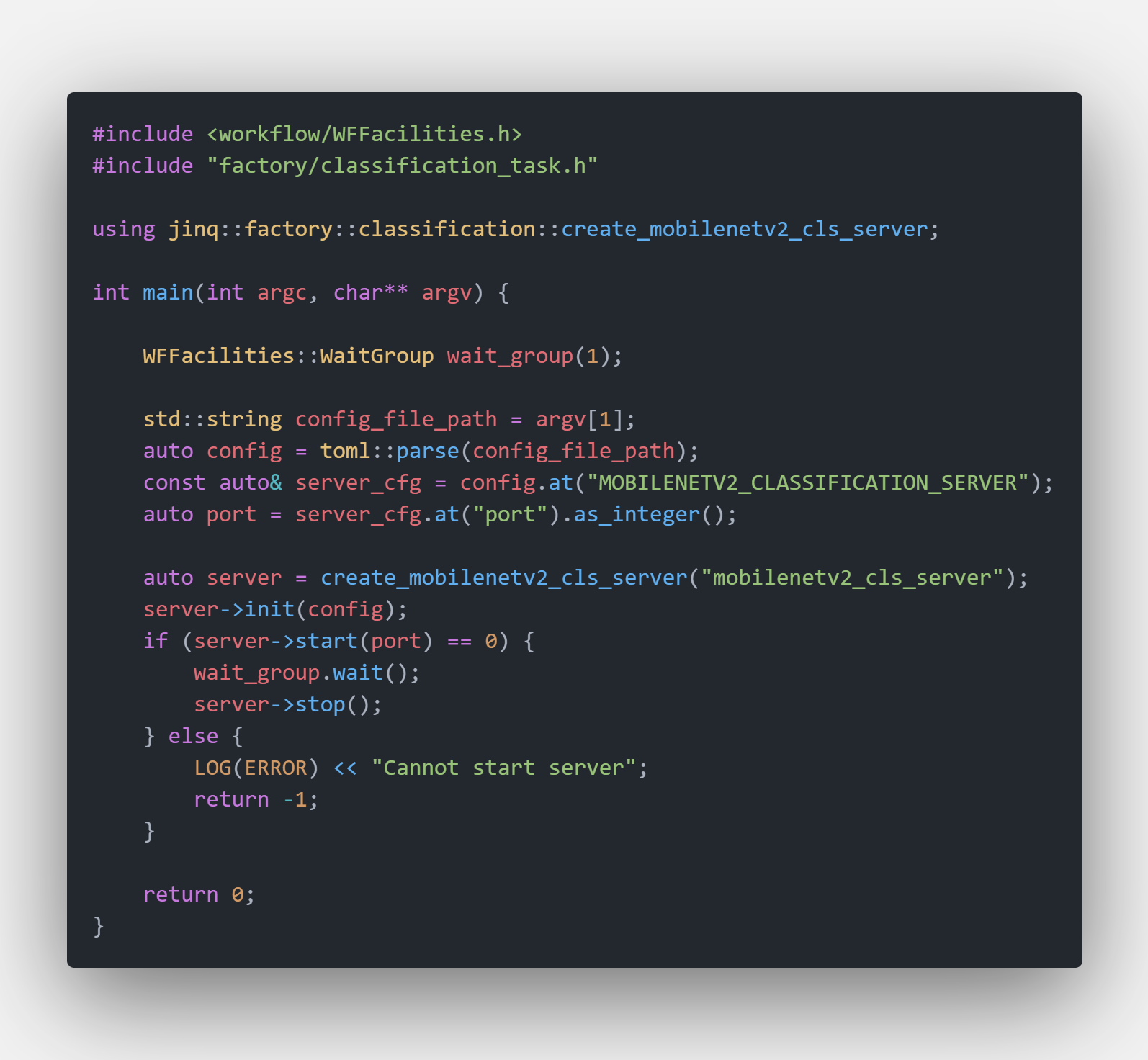
The executable binary file was built in $PROJECT_ROOT/_bin/mobilenetv2_classification_server.out. Simply run
cd $PROJECT_ROOT/_bin
./mobilenetv2_classification_server.out ../conf/server/classification/mobilenetv2/mobilenetv2_server_config.ini
When server successfully start on http:://localhost:8091 you’re supposed to see worker_nums workers were called up and occupied your GPU resources. By default 4 model workers will be created you may enlarge it if you have enough GPU memory.
Classification Server Ready to Serve
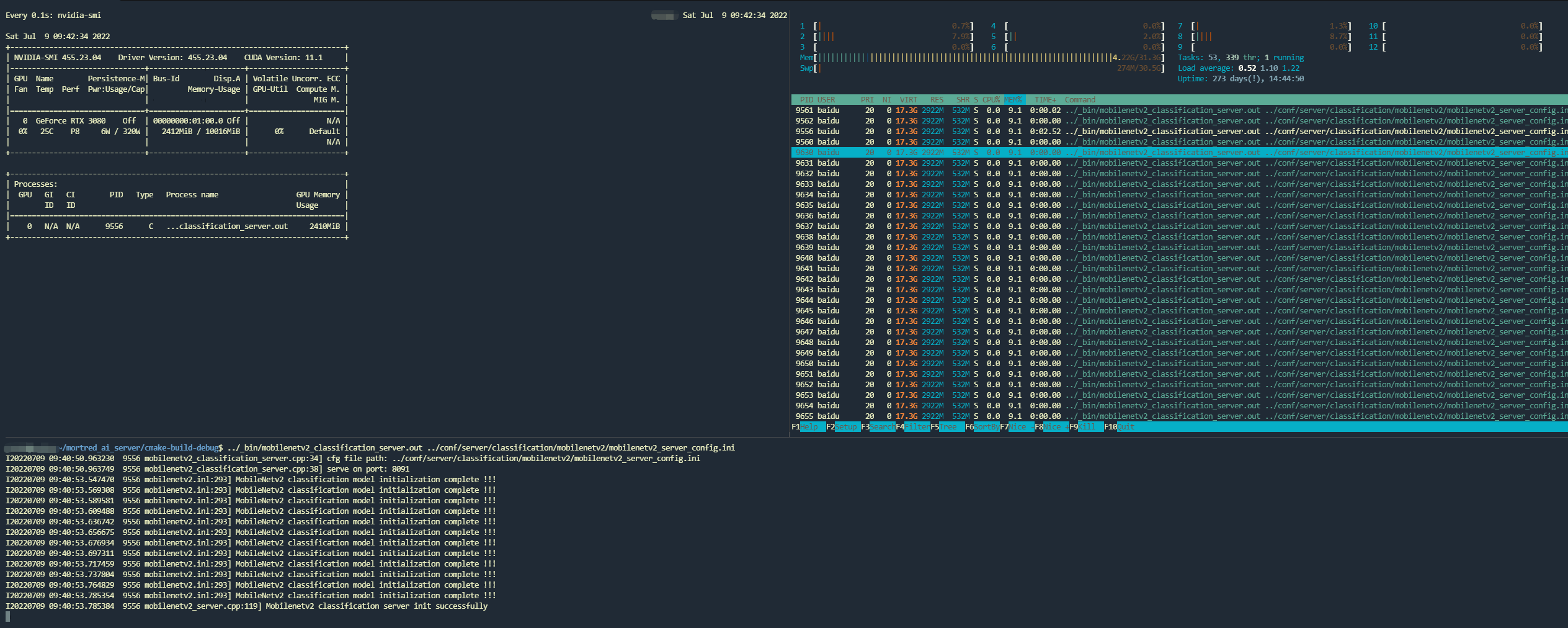
Python Client Example
You may find a demo python client to test the server at test_server.py#L39-L67. It’s very easy to post a request
Classification Client Code Snappit
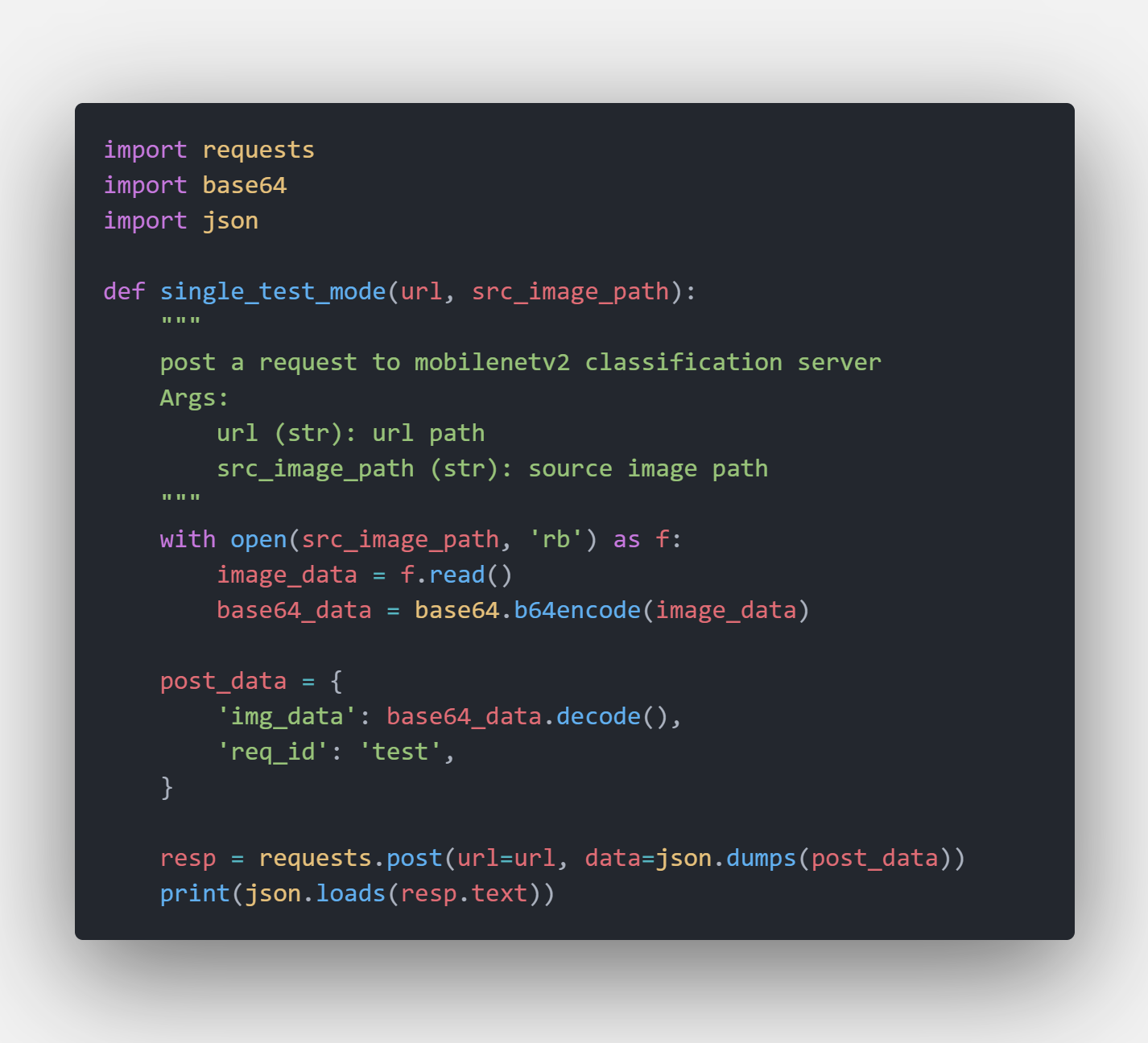
Server’s url can be found in server configuration. For a detailed server configuration refer to about_model_server_configuration
To use test python client you may run
cd $PROJECT_ROOT/scripts
export PYTHONPATH=$PWD:$PYTHONPATH
python server/test_server.py --server mobilenetv2 --mode single
The client will send the default test image 1000 times sequencially.
mobilenetv2 classification server output
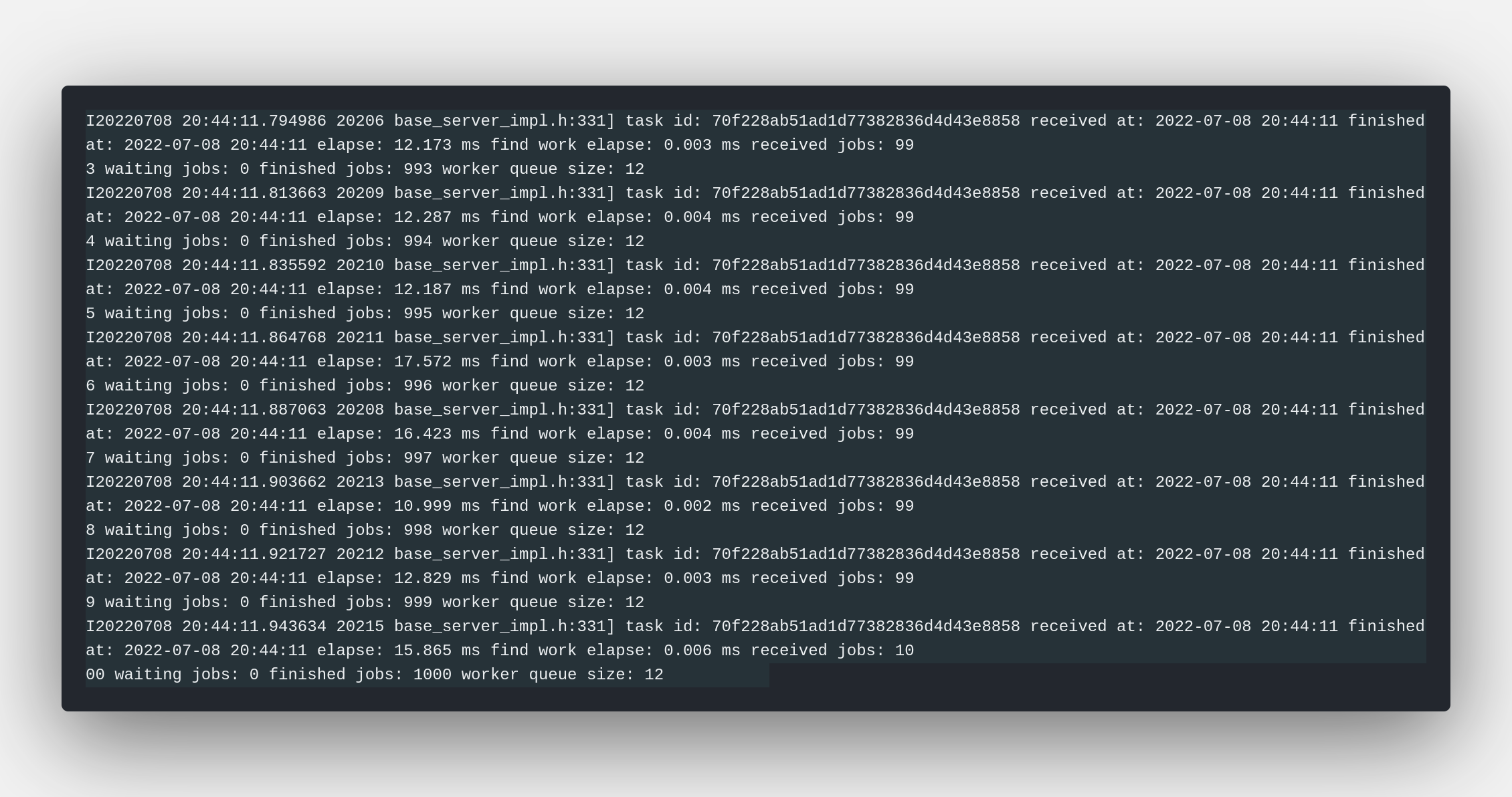
mobilenetv2 client server output

You may get the class_id and the score from the response.
Description Of Python Client
The script at test_server.py not only supports a sequencially toy client but also supports locust pressure test mode.
Python test config file was stored at py_demo_scripts_cfg.yaml.
Sample Client Config File
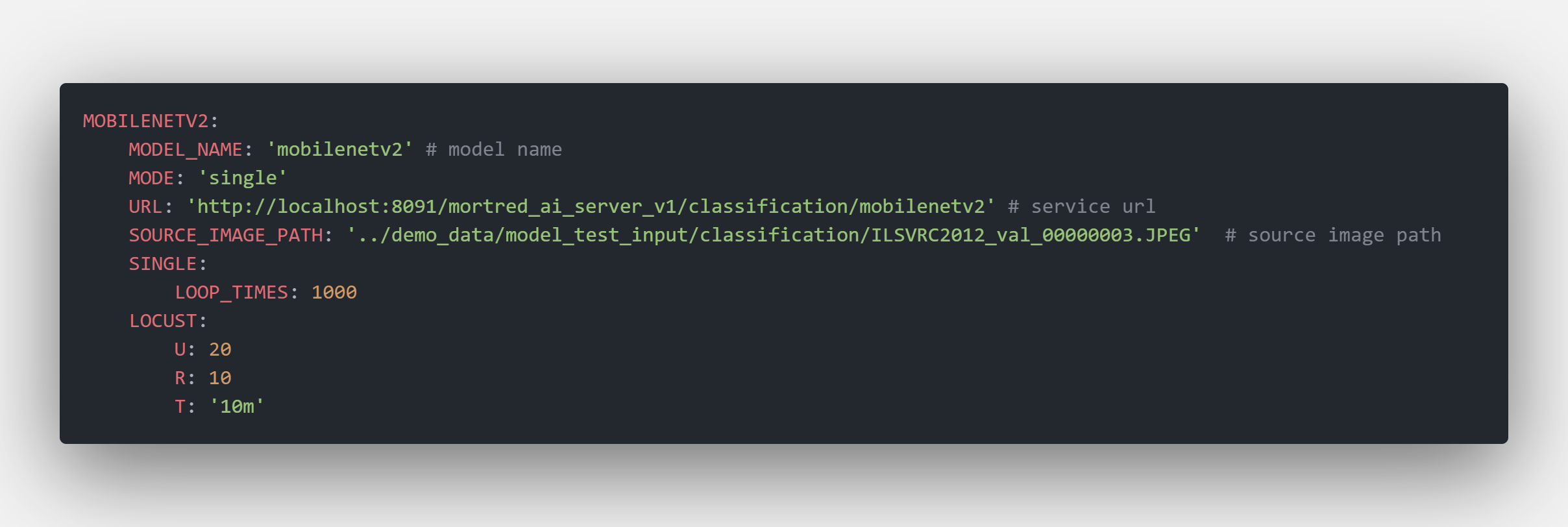
URL: the server’s url path
SOURCE_IMAGE_PATH: the source image path used for testing
MODE: client test mode only supported single and locust. The client will simply post the same requests LOOP_TIMES times when switched to single mode but run a bunch of concurrent requests when switched to locust mode.
U: The max concurrent client counts
R: started client counts every seconds
T: how long will the pressure test lasts
For detailed usage of Locust library you may find some help from locust documents
Simply start the pressure test via
cd $PROJECT_ROOT/scripts
export PYTHONPATH=$PWD:$PYTHONPATH
python server/test_server.py --server mobilenetv2 --mode locust
Here is server’s output under pressure test with default 4 workers
mobile client output with locust mode
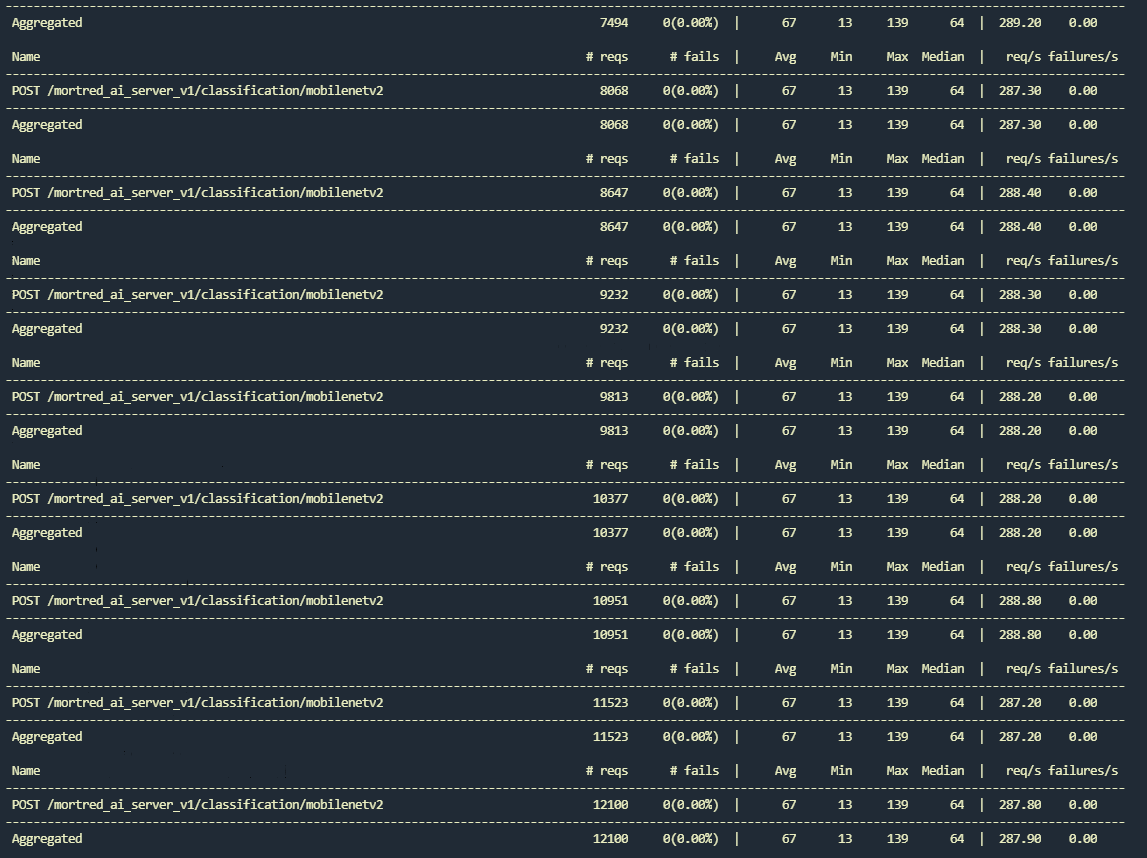
mobile server output with locust mode

As you can see up above the rps only reaches around 288 req/s which is far from meeting my expectations. When you look at the server’s output you may find the GPU usage was pretty low and some of the task even timed out. Besides the worker queue size remain empty at any time which means you may enlarge worker counts to promote the server’s rps. The test result shows avg resp time is 68ms minimu resp time is 13ms.

Now enlarge the worker nums from 4 to 12 and let’s see what happens.
 You may find almost no timed out task and worker queue size remains at least one worker. Gpu utilization also rise a lot. The test result shows avg resp time reduced to 35ms minimu resp time remains around 13ms and the rps reaches 546 req/s which is almost the same speed as model’s inference benchmark result. :fire::fire::fire:
You may find almost no timed out task and worker queue size remains at least one worker. Gpu utilization also rise a lot. The test result shows avg resp time reduced to 35ms minimu resp time remains around 13ms and the rps reaches 546 req/s which is almost the same speed as model’s inference benchmark result. :fire::fire::fire:
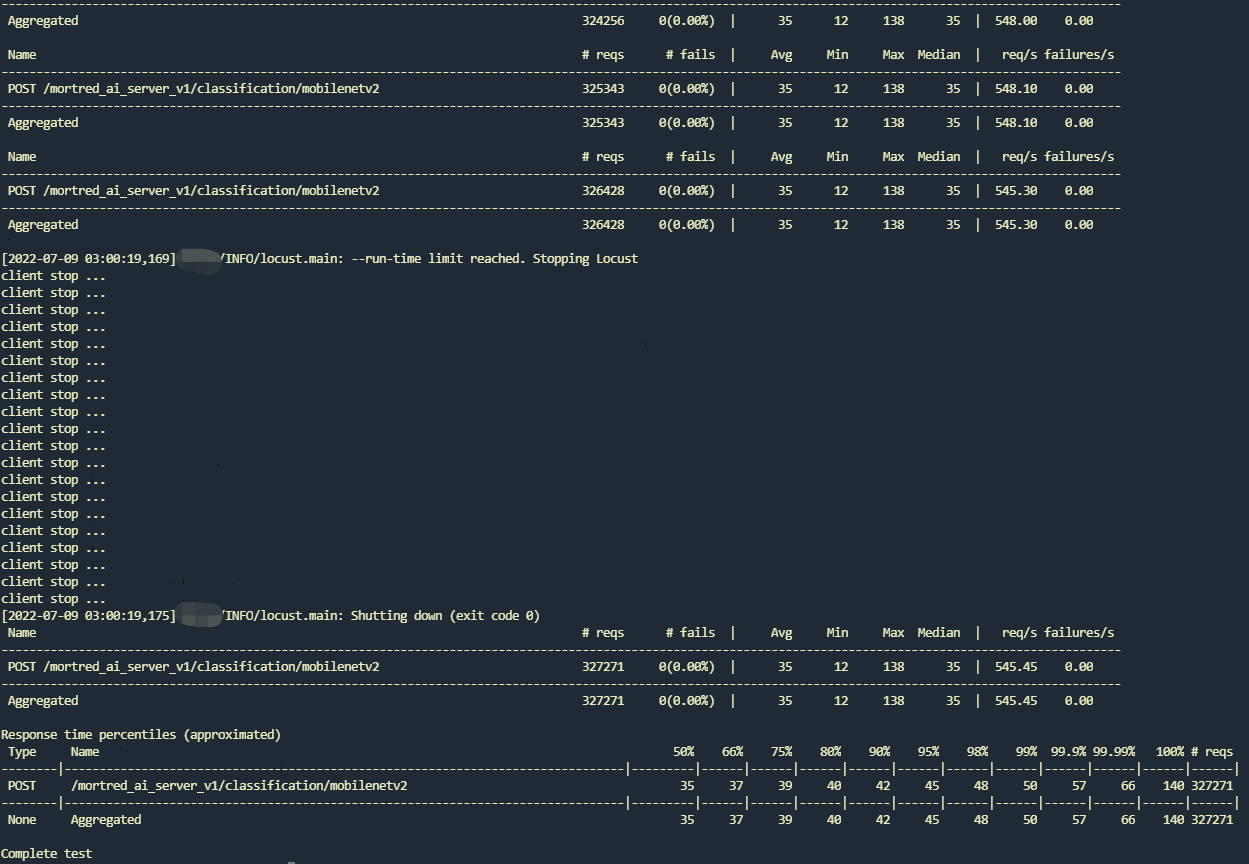
But do not expect to enlarge more workers to unlimitedly promote the server’s performance. It may benefit nothing when you enlarge worker to 24. Rps remains the same.
